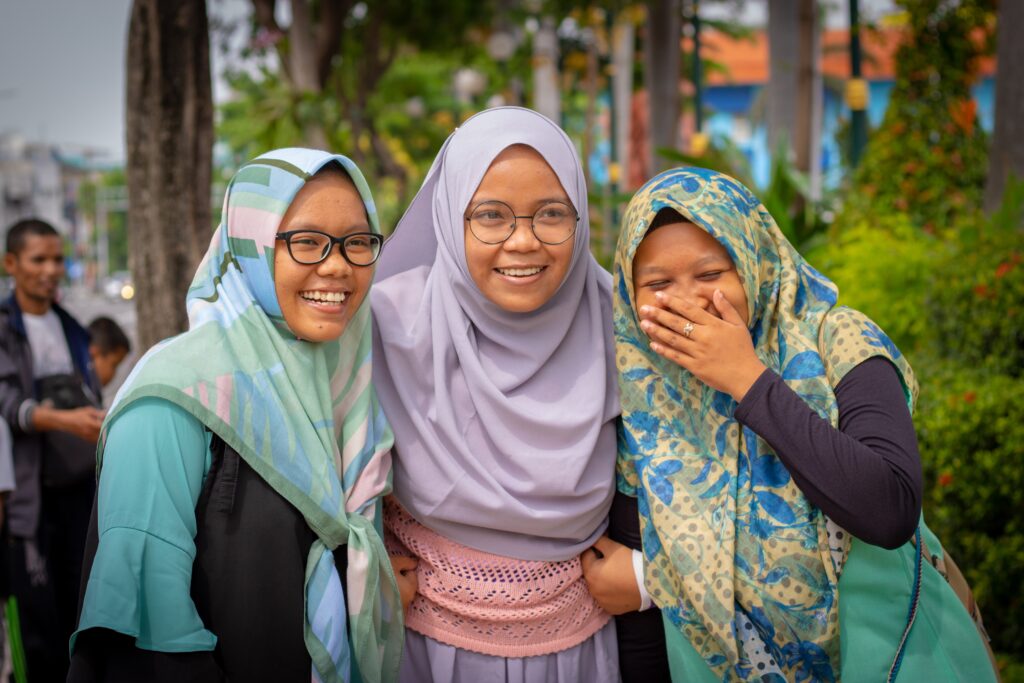“I may not know my rights, but you don’t know my life.”

In too many countries, and across too many communities, the issues that are afforded attention, as well as the means of addressing them, are decided by those in positions of power. The title of this piece, a quote by a 6-year-old from Pakistan, points to the shortcomings of this reality.
Traditionally, those in positions of power have been men. And while they remained exclusively in charge, the concerns of women ‒ such as male violence, sexual abuse, childcare, rights in marriage and divorce, non-discrimination in wages, or equal access to services ‒ simply never appeared on the political agenda. Only as women moved into politics, did that begin to change, as they forced the priorities of 50% of the adult population to be heard in the public arena. A similar pattern can be observed with many minoritised and under-represented groups, including children and young people.
It is now more than 30 years since the right to be heard was introduced in the almost universally ratified Convention on the Rights of the Child. And huge progress has been made – in small organisations working at the grassroots to major institutions such as the EU and Council of Europe, innovative practice and learning has been taking place. Nevertheless, there is still a long way to go before attitudes change sufficiently to acknowledge that children, too, not only have a right to have their voices heard, but they have a serious, substantial and essential contribution to make in understanding the nature of their lives, the challenges they face and potential solutions. And, lacking access to political, social and economic avenues of power, it is extraordinarily difficult for them to break through to seats of influence.
The barriers to change are significant. First, continuing deep-seated cultural resistance persists, denying recognition of children as social agents capable of adding value: They can’t be trusted, they have no experience, they have no relevant knowledge, it takes too much time, they will have unrealistic expectations, they will focus on trivial matters, it will expose them to ideas they are not capable of understanding, adults know best. Second, even where adults understand the importance of engaging with children, progress is stymied by the failure of too many organisations and systems to create, support and institutionalise spaces and opportunities for children’s participation. Lack of explicit mission statements, policies, time, budgets, training, supervision and monitoring hamper any sustained efforts to embed a culture of respect for children’s views. And third, all too often, where children’s participation does take place, it is limited to consultative processes in which the issues or questions, the analysis of findings, as well as the subsequent recommendations, are all defined and controlled by adults.
However, when serious investment is made to take children’s views seriously, the outcomes can be profound. Only through listening have we begun to learn about the nature, scale and impact of violence against children; the lives they inhabit online; the experience of cyberbullying; the pain and loss faced due to being removed from parents and separated from siblings; the depth of their concerns about climate change; the trauma of fleeing conflict and seeking asylum; and so much more. This knowledge is vital for the creation of effective laws, policies, services and training.
And children and young people are demanding that those in power start listening more. Evidence from the recent Covid pandemic highlights the extent of frustration and anger from young people across the world that so many of their rights were denied without any consultation or involvement from them.
Accordingly, the recent developments being initiated by so many foundations towards proactive and significant collaboration with children and young people are genuinely exciting. The case studies elaborated in, “Child and Youth Participation in Philanthropy”, a report published by Philea in May 2022, point to an imaginative and innovative commitment to taking children and young people seriously and building meaningful opportunities for influencing philanthropic practice. Not only is this of huge significance in starting a process in which children themselves can begin to shape the research and policy agenda, but foundations are also in a powerful position to generate a ripple effect through to the organisations they support.
Their approach combines an expectation that beneficiaries must demonstrate their commitment to children’s participation, with a practice of actively modelling innovative approaches to its attainment themselves. These emerging practices have demonstratively led to improvement in the focus of grantmaking; opportunities for young people to acquire confidence and skills; greater legitimacy to the demands for improved practice from grantees; and strengthened capacities among the foundations in evaluating project proposals. The case studies in the report prove that it is both possible and effective to work with ‒ and not simply for ‒ children. And it is to be hoped that the evidence of these multiple benefits will excite and encourage many other foundations to learn from and emulate this principled approach to philanthropy. It is a win-win development.
Excerpted from the report, “Child and Youth Participation in Philanthropy”, published in May 2022 by Philea.
Authors

